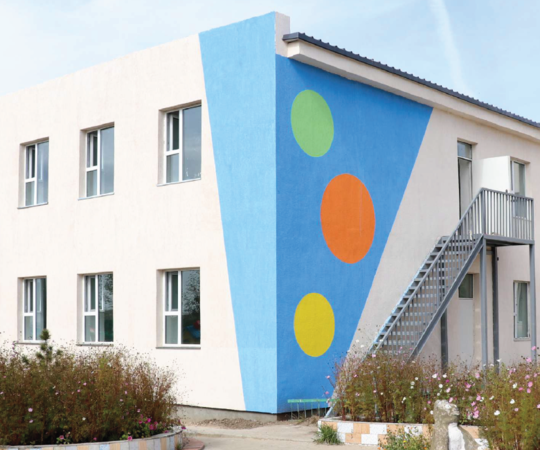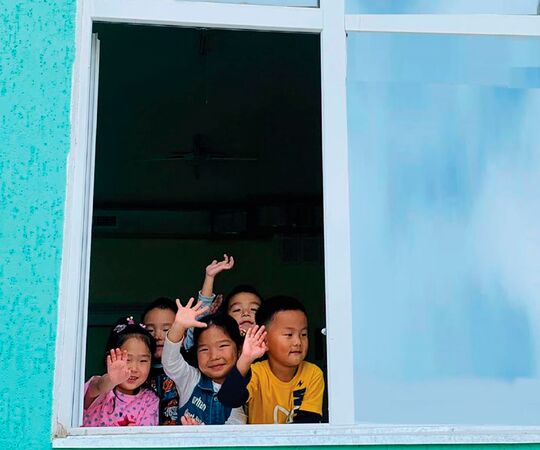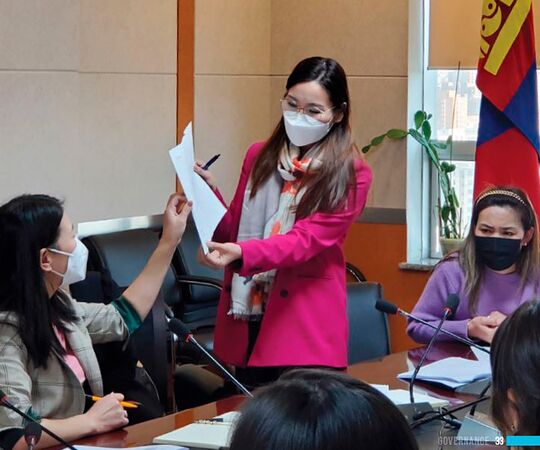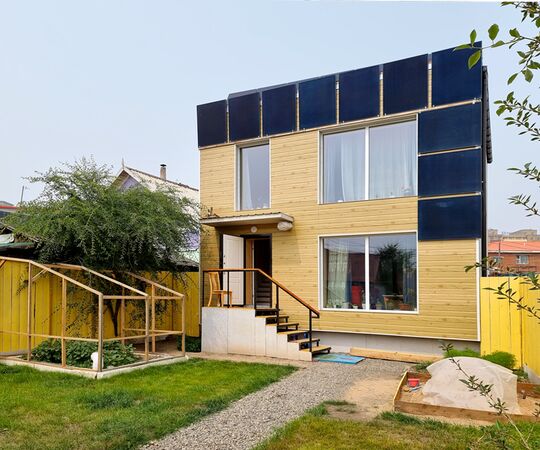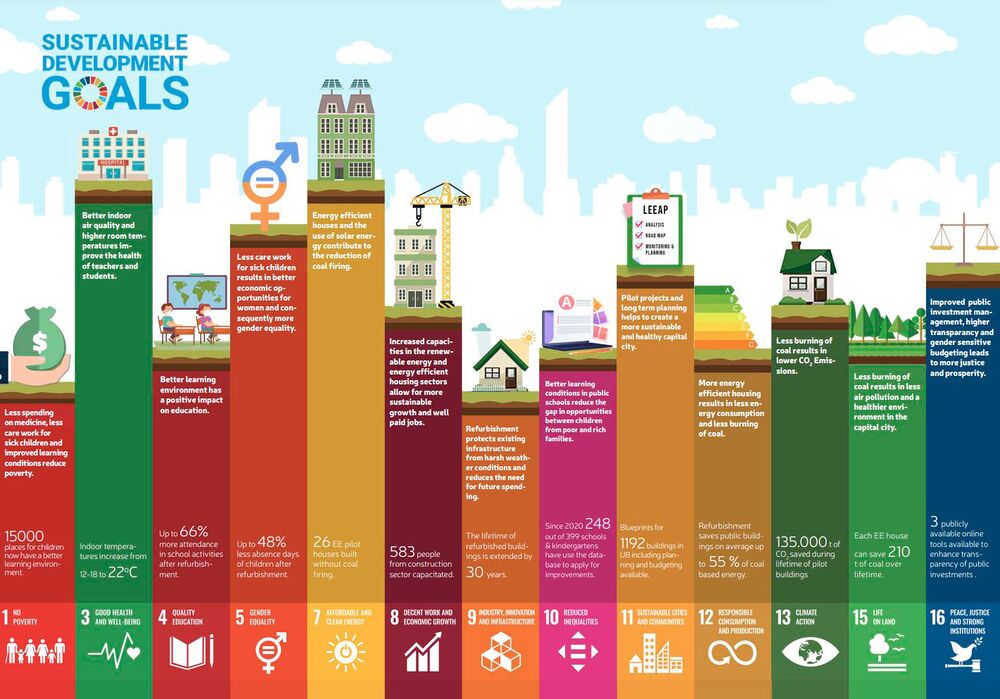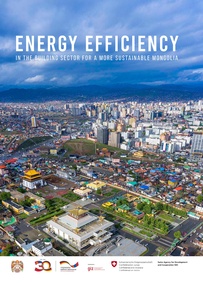Knowledge fuels change
For over a decade, Energypedia has shared free, reliable energy expertise with the world.
We’re now facing a serious funding gap.
Help keep this platform alive — your donation, big or small, truly matters!
Thank you for your support
Difference between revisions of "Energy Efficient Building Refurbishment in Mongolia"
***** (***** | *****) m Tag: 2017 source edit |
***** (***** | *****) m Tag: 2017 source edit |
||
| (53 intermediate revisions by 2 users not shown) | |||
| Line 1: | Line 1: | ||
| − | <div class="MONGOLIA"> <!-- Defines the color of headlines, link, etc. ) -->{{ | + | <div class="MONGOLIA"> <!-- Defines the color of headlines, link, etc. ) --> |
| + | |||
| + | {{template:Tabs Mongolia Refurbishment | ||
|Energy Efficient Building Refurbishment in Mongolia|Main Page | |Energy Efficient Building Refurbishment in Mongolia|Main Page | ||
| − | | | + | |Local Energy Efficiency Action Plan|LEEAP |
| − | | | + | |Governance in the Municipality of Ulaanbaatar|Governance |
| + | |EEP in Mongolia Capacity Building & Finance|Capacity Building & Finance | ||
| + | |EEP in Mongolia Technology and Pilots|Technology & Pilots | ||
| + | |EEP in Mongolia Ressources & Downloads|Ressources & Downloads | ||
}} | }} | ||
| + | |||
{{header banner portal | {{header banner portal | ||
| − | |image = Icon-green-house- | + | |image = Icon-green-house-green.png |
|headline = Welcome to <big>'''Energy Efficient Building Refurbishment in Mongolia'''</big> | |headline = Welcome to <big>'''Energy Efficient Building Refurbishment in Mongolia'''</big> | ||
|teaser = The GIZ project "Energy Efficient Building Refurbishment in Mongolia" (EEP) works with the Municipality of Ulaanbaatar (MUB) and other stakeholders on public investment management and energy efficiency in the building sector. | |teaser = The GIZ project "Energy Efficient Building Refurbishment in Mongolia" (EEP) works with the Municipality of Ulaanbaatar (MUB) and other stakeholders on public investment management and energy efficiency in the building sector. | ||
}} | }} | ||
| + | = About EEP = | ||
| + | [[Mongolia Energy Situation|Mongolia]] is characterised by extreme climatic conditions with short summers and long, cold winters, which make Ulaanbaatar the coldest capital in the world. As of 2020, the city is home to 411,000 households, 221,000 of whom live in informal settlements called “ger districts”. | ||
| − | + | The ger districts are mostly off-grid areas with limited access to electricity, water, sanitation, heat supply, and public transport. In their brick-and-mortar houses and gers with high energy loss, households burn coal in stoves and use latrines in temperatures regularly dropping below minus 20°C. This makes the city a pollution hub, and exposes it to a public health crisis. | |
| − | |||
| − | + | Hence, energy efficiency in the building sector is a crucial topic with extensive dimensions. Without good insulation, winter times mean cold buildings and devastating air pollution. A problem that is most hazardous for children and elderly people, but harms everyone. For example, miscarriages are 3.6 times more likely to happen during coal burning months, and one in 10 deaths is attributable to air pollution, 80% of which is caused in the ger districts. Low room temperatures in public and private buildings are an additional acute health hazard during the winter season. At the same time, Mongolia has joined the Paris Climate Agreement and pledged to reduce its greenhouse gas emissions. If widely applied, the measures to improve energy efficiency in the building sector can also significantly reduce Mongolia's CO<sub>2</sub> emissions - currently ranked 8th in the world on a per capita basis - and thus fulfil the Paris Climate Agreement. | |
| − | <gallery widths= | + | <gallery widths=540px heights=450px mode="nolines" class="center"> |
| − | File: | + | File:EEP - Kindergarten.PNG |
| − | File: | + | File:EEP - Children in Kindergarten.jpg |
| + | File:EEP - Ulaanbaatar Governance.JPG | ||
| + | File:Sakura House 6 5.jpg | ||
</gallery> | </gallery> | ||
| + | <center>© GIZ / Energy Efficient Building Refurbishment in Mongolia (EEP)</center> | ||
| + | |||
| + | = The Energy Efficiency Project = | ||
| + | Against this backdrop, a project was developed in close cooperation with the Municipality of Ulaanbaatar (MUB), and the Ministry of Energy (MoE). The project was financed by the Swiss Agency for Development and Cooperation (SDC) & the German Federal Ministry for Economic Cooperation and Development (BMZ). | ||
| + | |||
| + | As this cooperation was established on existing activities, two projects were merged: The SDC-funded ”Public Investment in Energy Efficiency Phase 2“ (PIE-2), and the German Government funded “Energy Efficiency Building Refurbishment in Mongolia“ (EEP). The two projects joined forces, and worked together along with the MUB on four main topics on different implementation levels: | ||
| + | |||
| + | #'''Adopting the Local Energy Efficiency Action Plan for the construction sector''' (see chapter “[[Local Energy Efficiency Action Plan|LEEAP]]”). | ||
| + | #'''Introducing transparent, effective and gender-sensitive public investment management in Ulaanbaatar through the case of energy efficiency in buildings''' (see chapter “[[Governance in the Municipality of Ulaanbaatar]]”). | ||
| + | #'''Improving private sector’s capacity for energy efficiency''' (see chapter “[[EEP in Mongolia Capacity Building & Finance]]”). | ||
| + | #'''Introducing energy efficiency technologies into ger neighbourhoods''' (see chapter “[[EEP in Mongolia Technology and Pilots]]”). | ||
| + | |||
| + | The LEEAP describes actions to reach energy efficiency targets and thus, improve air quality. It also includes monitoring and energy management. Trough establishing a common understanding of the starting point with an initial quantification of the scale of the problem, LEEAPs are the first step in the right direction for a safer, healthier, and greener city. [[Local Energy Efficiency Action Plan|Read more]] to find out how a LEEAP will help Mongolia and especially Ulaanbaatar to save energy and CO<sub>2</sub>-emissions. | ||
| + | |||
| + | Improving the energy efficiency of (public) buildings also requires legal groundwork. Therefore, it is important to improve the management of public investments, and to introduce new standards to improve energy efficiency through better planning, budgeting, financing, implementation and monitoring of project activities. The focus of the governance advisory work was therefore on enriching the core system with institutional quality and principles of good governance. Read more about this and on why energy efficiency is a particularly gender-sensitive topic in the [[Governance in the Municipality of Ulaanbaatar|Governance chapter]]. | ||
| + | |||
| + | The building of capacities in public and private sector institutions needs to be strengthened on different levels if you want to integrate know-how in many different areas. [[EEP in Mongolia Capacity Building & Finance|Read more]] on this issue in an interview about the need to develop a new financing scheme for energy efficient houses, and on the first officially certified green building in Mongolia. | ||
| + | |||
| + | The last chapter highlights the technical aspects of the thermo-technical refurbishment of schools and kindergartens and presents the results in saving energy of implemented pilot projects. [[EEP in Mongolia Technology and Pilots|Learn more]] about the enormous impact energy efficient buildings have on the health and learning success of (school) children, as well as on saving CO<sub>2</sub> emissions. | ||
| + | |||
| + | = The EEP Magazine = | ||
| + | Now, at the end of the current energy efficiency project (EEP), it is time to look at the achievements and lessons learned and share them with the global energy community with the hope that others can learn and benefit from our experiences in Mongolia. For this purpose, a magazine was created, which is attached below. Please feel free to download and share it! | ||
| + | |||
| + | This portal summarises the main contents and seeks to document the results and outcomes of the work implemented between 2018 and 2022 by the Deutsche Gesellschaft für Internationale Zusammenarbeit (GIZ) GmbH. It not only demonstrates the results, but also presents ideas and tools on how to further develop this topic. | ||
| + | |||
| + | <div class="box box-green"> | ||
| + | = Sustainable Development Goals (SDGs) = | ||
| + | The United Nations Sustainable Development Goals (SDGs) were adopted by all United Nations Member States in 2015 as a universal call to action to end poverty, protect the planet and ensure that all people enjoy peace and prosperity by 2030. There are a total of 17 interrelated SDGs: Action in one area will affect outcomes in others. All development must balance social, economic, and environmental sustainability. | ||
| + | |||
| + | The Project has contributed to thirteen SDGs in the following areas: Some numbers show direct examples of the project’s contribution. More can be seen in the relevant articles. Each chapter indicates the relevant SDG symbols that have been touched upon. | ||
| + | |||
| + | [[File:EEP SDGs-Mongolia.JPG|1000px|center]] | ||
| + | </div> | ||
| + | ---- | ||
| + | <p id="EEP-MAGAZINE"></p>The magazine on EEP's work in Mongolia can be downloaded [[:File:EEP Magazine English (compressed).pdf|here]]: | ||
| + | <div style="clear: both;"></div> [[File:EEP Magazine English (compressed).pdf|thumb|left|283x283px|Energy Efficiency in the Building Sector for a more Sustainable Mongolia]] | ||
| + | <div style="clear: both;"></div> | ||
| − | + | ---- | |
| − | + | For more information about the project please contact: [mailto:giz-mongolei@giz.de GIZ Mongolei]. | |
| + | [[File:Footer-Mongolia-Refurbishment.png|center]] | ||
</div> <!-- End .MONGOLIA--> | </div> <!-- End .MONGOLIA--> | ||
| Line 32: | Line 79: | ||
__NOEDITSECTION__ | __NOEDITSECTION__ | ||
__NOTOC__ | __NOTOC__ | ||
| − | [[Category:]] | + | [[Category:Mongolia]] |
| + | [[Category:Buildings]] | ||
| + | [[Category:Energy Efficiency in Buildings]] | ||
| + | [[Category:Heating]] | ||
Latest revision as of 07:45, 4 July 2022
About EEP
Mongolia is characterised by extreme climatic conditions with short summers and long, cold winters, which make Ulaanbaatar the coldest capital in the world. As of 2020, the city is home to 411,000 households, 221,000 of whom live in informal settlements called “ger districts”.
The ger districts are mostly off-grid areas with limited access to electricity, water, sanitation, heat supply, and public transport. In their brick-and-mortar houses and gers with high energy loss, households burn coal in stoves and use latrines in temperatures regularly dropping below minus 20°C. This makes the city a pollution hub, and exposes it to a public health crisis.
Hence, energy efficiency in the building sector is a crucial topic with extensive dimensions. Without good insulation, winter times mean cold buildings and devastating air pollution. A problem that is most hazardous for children and elderly people, but harms everyone. For example, miscarriages are 3.6 times more likely to happen during coal burning months, and one in 10 deaths is attributable to air pollution, 80% of which is caused in the ger districts. Low room temperatures in public and private buildings are an additional acute health hazard during the winter season. At the same time, Mongolia has joined the Paris Climate Agreement and pledged to reduce its greenhouse gas emissions. If widely applied, the measures to improve energy efficiency in the building sector can also significantly reduce Mongolia's CO2 emissions - currently ranked 8th in the world on a per capita basis - and thus fulfil the Paris Climate Agreement.
The Energy Efficiency Project
Against this backdrop, a project was developed in close cooperation with the Municipality of Ulaanbaatar (MUB), and the Ministry of Energy (MoE). The project was financed by the Swiss Agency for Development and Cooperation (SDC) & the German Federal Ministry for Economic Cooperation and Development (BMZ).
As this cooperation was established on existing activities, two projects were merged: The SDC-funded ”Public Investment in Energy Efficiency Phase 2“ (PIE-2), and the German Government funded “Energy Efficiency Building Refurbishment in Mongolia“ (EEP). The two projects joined forces, and worked together along with the MUB on four main topics on different implementation levels:
- Adopting the Local Energy Efficiency Action Plan for the construction sector (see chapter “LEEAP”).
- Introducing transparent, effective and gender-sensitive public investment management in Ulaanbaatar through the case of energy efficiency in buildings (see chapter “Governance in the Municipality of Ulaanbaatar”).
- Improving private sector’s capacity for energy efficiency (see chapter “EEP in Mongolia Capacity Building & Finance”).
- Introducing energy efficiency technologies into ger neighbourhoods (see chapter “EEP in Mongolia Technology and Pilots”).
The LEEAP describes actions to reach energy efficiency targets and thus, improve air quality. It also includes monitoring and energy management. Trough establishing a common understanding of the starting point with an initial quantification of the scale of the problem, LEEAPs are the first step in the right direction for a safer, healthier, and greener city. Read more to find out how a LEEAP will help Mongolia and especially Ulaanbaatar to save energy and CO2-emissions.
Improving the energy efficiency of (public) buildings also requires legal groundwork. Therefore, it is important to improve the management of public investments, and to introduce new standards to improve energy efficiency through better planning, budgeting, financing, implementation and monitoring of project activities. The focus of the governance advisory work was therefore on enriching the core system with institutional quality and principles of good governance. Read more about this and on why energy efficiency is a particularly gender-sensitive topic in the Governance chapter.
The building of capacities in public and private sector institutions needs to be strengthened on different levels if you want to integrate know-how in many different areas. Read more on this issue in an interview about the need to develop a new financing scheme for energy efficient houses, and on the first officially certified green building in Mongolia.
The last chapter highlights the technical aspects of the thermo-technical refurbishment of schools and kindergartens and presents the results in saving energy of implemented pilot projects. Learn more about the enormous impact energy efficient buildings have on the health and learning success of (school) children, as well as on saving CO2 emissions.
The EEP Magazine
Now, at the end of the current energy efficiency project (EEP), it is time to look at the achievements and lessons learned and share them with the global energy community with the hope that others can learn and benefit from our experiences in Mongolia. For this purpose, a magazine was created, which is attached below. Please feel free to download and share it!
This portal summarises the main contents and seeks to document the results and outcomes of the work implemented between 2018 and 2022 by the Deutsche Gesellschaft für Internationale Zusammenarbeit (GIZ) GmbH. It not only demonstrates the results, but also presents ideas and tools on how to further develop this topic.
Sustainable Development Goals (SDGs)
The United Nations Sustainable Development Goals (SDGs) were adopted by all United Nations Member States in 2015 as a universal call to action to end poverty, protect the planet and ensure that all people enjoy peace and prosperity by 2030. There are a total of 17 interrelated SDGs: Action in one area will affect outcomes in others. All development must balance social, economic, and environmental sustainability.
The Project has contributed to thirteen SDGs in the following areas: Some numbers show direct examples of the project’s contribution. More can be seen in the relevant articles. Each chapter indicates the relevant SDG symbols that have been touched upon.
The magazine on EEP's work in Mongolia can be downloaded here:
For more information about the project please contact: GIZ Mongolei.

